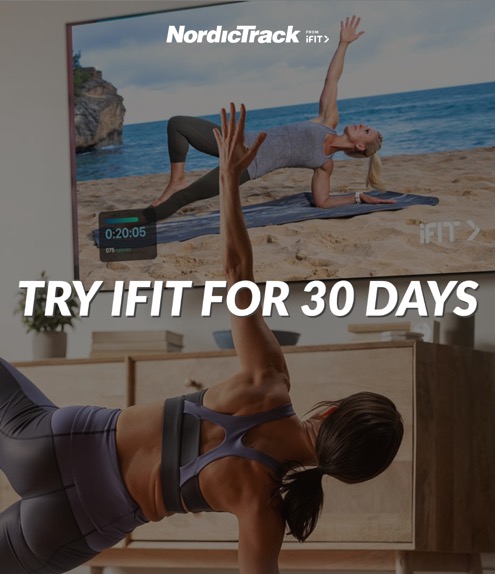
If you have ever worked hard in the gym or powered through cardio yet still felt weak through your midsection, you are not alone. True strength is not just about the miles you log or the weight you lift. It is about how well your body moves as a whole.
Your core is the foundation of that strength. It helps you move with balance, stability, and confidence. But when it is neglected, posture, performance, and even daily comfort start to break down.
That is where Pilates comes in. It is more than a workout. It is a mindful method that rebuilds strength from the inside out, helping you move better, stand taller, and feel stronger in everything you do.
What Is Pilates?
Pilates was created by Joseph Pilates in the early 1900s to help people regain control, mobility, and confidence after injury³. It combines about 50 precise, low-impact exercises that target your abdomen, back, hips, and pelvis, or what Pilates called your “powerhouse.”
Each movement connects breath with motion to engage your deep stabilizing muscles. Over time, this practice builds a foundation of stability, flexibility, and strength that supports everything from athletic training to daily tasks.
Today, Pilates has evolved far beyond the studio. On platforms like iFIT, you can experience licensed Club Pilates workouts and guided series led by experts such as Jeni DelPozo, including Find Your Strength and Flow in Jeni DelPozo’s Pilates Series.
These classes bring expert instruction directly to your living room, allowing you to explore Pilates at your own pace, on your own schedule.
Why Core Strength Matters
Your core is more than a set of abs. It is the stabilizing system for nearly every motion your body makes. According to the Mayo Clinic, strong core muscles improve balance, posture, and stability¹. They support your spine, absorb impact, and allow you to move efficiently. Weak core muscles, on the other hand, can lead to back pain, fatigue, and poor body mechanics.
The Heart Research Institute adds that a strong core helps align your spine and pelvis, reducing stress on joints and improving overall movement quality². When your core is stable, everything else becomes more efficient, from walking upstairs to lifting weights to sitting comfortably at your desk.
How Pilates Builds Functional Strength
Pilates develops strength through control, not momentum. Every movement emphasizes precision, breathing, and mindful muscle engagement.
Research shows that Pilates training:
- Strengthens deep abdominal and back muscles⁵
- Activates stabilizers that improve spinal alignment⁴
- Reduces chronic low-back pain when practiced consistently⁴
- Enhances flexibility and muscular endurance⁵
- Improves coordination and balance through controlled movement⁶
By targeting these deep layers of muscle, Pilates teaches your body how to move with intention and awareness. The result is functional strength, the power that supports how you live, not just how you work out.
Pilates in the Modern Training Era
Pilates has evolved into a core pillar of modern fitness. It complements strength training, cardio, and recovery by improving mobility, posture, and joint alignment.
Whether you start with mat Pilates or try wall Pilates for shorter, supported workouts, the consistent focus on control and form makes every session meaningful.
On iFIT, you can follow global trainers and official Club Pilates instructors through structured programs designed to improve strength, flexibility, and flow. These sessions meet you where you are and progress with you, creating a sustainable foundation for long-term fitness.
Building Core Strength with NordicTrack

Pilates helps you build strength from within. NordicTrack helps you carry it into motion.
Smart cardio and Pilates together form a complete fitness approach. The NordicTrack Commercial 2450 Treadmill and X24 Incline Trainer both feature iFIT SmartAdjust technology, automatically syncing incline and speed to match your effort. This keeps your core engaged and your alignment steady during every climb.
Incorporating low-impact incline walks or jogs alongside Pilates sessions may support stability, mobility, and overall fitness. This type of well-rounded routine can help promote consistent movement habits and a balanced approach to training.
The Takeaway
Your core is more than a muscle group. It is your body’s foundation for strength, balance, and confidence. Pilates reconnects you to that foundation, helping you build stability that improves how you move and how you feel.
Start small. Stay consistent. Let your strength grow from the center outward. When you do, you will move better, stand taller, and carry that confidence into every part of your life.
FAQ: Pilates and Core Strength
Pilates targets the deep stabilizing muscles of your abdomen, back, hips, and glutes³.
Yes. Pilates builds endurance and stability using controlled body-weight resistance³.
Not entirely. Pilates complements cardio by improving posture and breathing efficiency¹.
Two to three sessions per week build technique, strength, and consistency⁵.
Mat Pilates focuses on floor-based exercises, while wall Pilates uses the wall for added support and alignment, making it great for beginners.
No. Most Pilates workouts only require a mat, though props like resistance bands or small balls can add variety³.
Many people notice improved posture and stability within four to six weeks of consistent practice⁵.
Studies suggest that Pilates can reduce chronic back pain when performed with proper guidance⁴. Always consult your physician first.
Absolutely. Pilates was developed for rehabilitation and athletic training and benefits everyone who wants better movement control³.
Begin with 10- to 15-minute guided iFIT Pilates or mobility sessions, then increase gradually as you build strength.
Explore More
- Beginner Plan to Get Strong at Home
- Great Workout on an Elliptical
- Ready to Level Up: Why a Personalized Training Program Gets You Real Results
- Explore Boutique Fitness Favorites with Club Pilates on iFIT
- Find Your Strength and Flow in Jeni DelPozo’s Pilates Series
References
- Mayo Clinic. Core Exercises: Why You Should Strengthen Your Core Muscles.
- Heart Research Institute. Core Strength: Why Is It Important and How Do You Maintain It?.
- Journal of Bodywork and Movement Therapies. Pilates Uses a Combination of Exercises to Improve Flexibility, Posture, and Stability.
- Frontiers in Physiology. Pilates to Improve Core Muscle Activation in Chronic Low Back Pain: A Systematic Review.
- Journal of Bodywork and Movement Therapies. Effects of Pilates Exercise on Trunk Strength, Endurance and Flexibility in Sedentary Adult Females.
- Frontiers in Physiology. Comparisons of Functional Movements and Core Muscle Activity in Women According to Pilates Proficiency.
Disclaimer: The primary purpose of this blog post is to inform and entertain. Nothing on the post constitutes or is intended to be a substitute for professional medical advice, prevention, diagnosis, or treatment. Reliance on any information provided on the blog is solely at your own risk. Always seek the advice of your physician or other qualified health provider with any questions you may have regarding a medical condition, and please consult your doctor or other health care provider before making any changes to your diet, sleep methods, daily activity, or fitness routine. Do not disregard professional medical advice or delay seeking it because of information available on this blog. NordicTrack assumes no responsibility for any personal injury or damage sustained by any recommendations, opinions, or advice given in this article. Always follow the safety precautions included in the owner’s manual of your fitness equipment.


